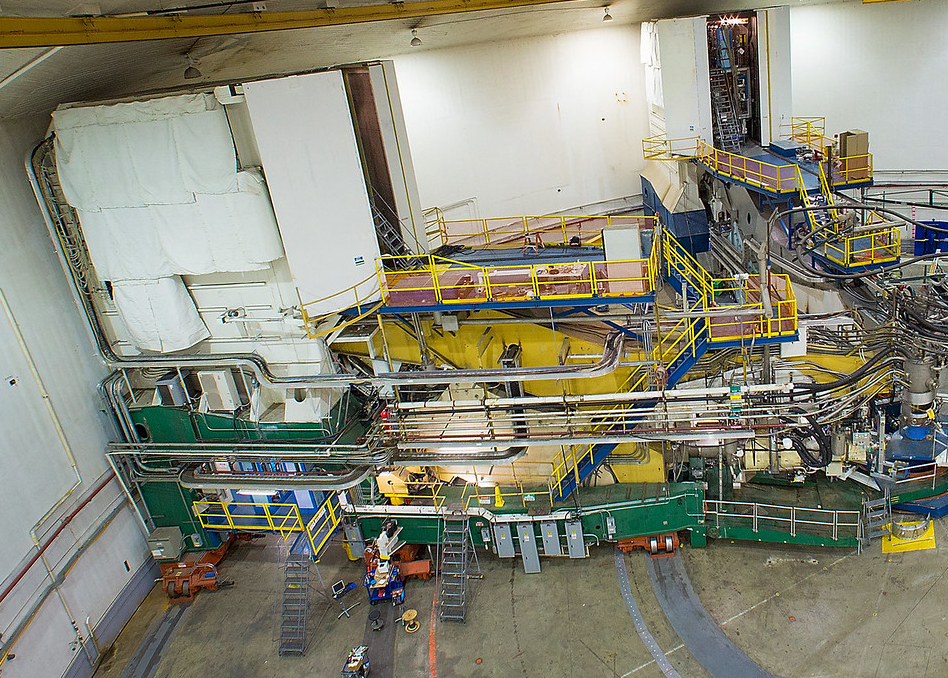A precision measurement of the neutron skin in a calcium nucleus surprisingly reveals a thinner skin than expected from a similar measurement in lead
NEWPORT NEWS, VA – A new measurement of the neutron skin in calcium reveals that heavier types of calcium nuclei are relatively thin-skinned. The new measurement, made by the 48Ca Radius EXperiment (CREX) collaboration at DOE’s Thomas Jefferson National Accelerator Facility, was presented at the 2021 Fall Meeting of the APS Division of Nuclear Physics of the American Physical Society. It is the first highly robust electroweak measurement of the neutron skin in a medium-weight nucleus, and it features a precision of about 0.025 millionths of a nanometer.
The measurement comes from a series of experiments aimed at teasing out how protons and neutrons are distributed in dense nuclei. Earlier this year, the 208Pb Radius EXperiment (PREX) confirmed that lead nuclei have a relatively thick skin. The lead-208 nucleus has 82 protons and a whopping 126 neutrons. In lead, a relatively equal number of its protons and neutrons congregate toward the core. Extra neutrons in lead nuclei get pushed out to the fringe to make up the neutron-rich “skin” around the nucleus.
This new result from CREX is from measurements made of the neutron-rich nuclei of calcium-48, which has 28 neutrons but just 20 protons. The researchers specifically measured the weak form factor of the calcium-48 nucleus to an accuracy of 4.3%.
“Our new, extremely precise CREX measurement on calcium-48 indicates a thin neutron skin around its nucleus. In contrast, our PREX measurement on lead-208 revealed a somewhat thick skin around that nucleus,” said Caryn Palatchi, a research associate at the University of Virginia who presented the results on behalf of the CREX collaboration.
This discrepancy is exciting for nuclear physics. It presents the opportunity for further exploration to determine why there’s such a big difference between the medium-density calcium nucleus and the high-density lead nucleus.
“The smaller calcium nucleus has fewer protons and neutrons, and it’s just within the reach of certain types of calculations that come from first principles, or ab initio calculations,” Palatchi said. “The CREX result is consistent with the thin neutron skin predictions from coupled cluster calculations.”
Robert Michaels, a staff scientist at Jefferson Lab and lead spokesperson for this experiment, explains that these theoretical calculations apply well to calcium-48.
“It is gratifying that the theory seems to work for calcium-48,” Michaels said.
This comparison with theory shows that the experimental technique is well-calibrated for nuclei that can be calculated reliably. That also implies that the lead measurement, done with the same calibrated technique, is proven to work, improving confidence in that result.
The researchers say the next step is to move toward final publication of the new result. The final, published result will feature information on calcium-48’s form factor, its neutron skin and neutron radius. They also aim to conduct painstaking comparisons of the PREX and CREX experiments with theory to determine what additional information can be gleaned from the experiments.
The CREX experiment was carried out in the Continuous Electron Beam Accelerator Facility, a DOE Nuclear Physics research facility. Data were taken December 2019-March 2020 and July-Sept. 2020. More detailed information about how the experiment was carried out can be found in the result teaser release and in the additional material linked below.
Further Reading
Novel Experiment Measures Neutron Skin in Calcium
CREX Experimental Proposal
Physicists Net Neutron Star Gold from Measurement of Lead
Physics Today: Lead-208 nuclei have thick skins
Contact: Kandice Carter, Jefferson Lab Communications Office, kcarter@jlab.org
Editor's note: Corrected link text - January 2024.


